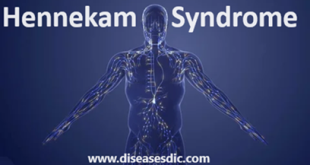What is Hantavirus Infection?
Hantavirus infection is a viral disease that is spread from rodents to people. The virus can cause severe infections of the lungs (with cough and shortness of breath) or kidneys (with abdominal pain, and sometimes kidney failure).
Hantaviruses are a family of viruses spread mainly by rodents and can cause varied disease syndromes in people worldwide. Infection with any hantavirus can produce hantavirus disease in people. Hantaviruses in the Americas are known as “New World” hantaviruses and may cause hantavirus pulmonary syndrome (HPS). Other hantaviruses, known as “Old World” hantaviruses, are found mostly in Europe and Asia and may cause hemorrhagic fever with renal syndrome (HFRS).
Each hantavirus serotype has a specific rodent host species and is spread to people via aerosolized virus that is shed in urine, feces, and saliva, and less frequently by a bite from an infected host. The most important hantavirus in the United States that can cause HPS is the Sin Nombre virus, spread by the deer mouse.
Mode of transmission
Hantavirus is mainly transmitted through direct contact with the faeces, saliva or urine of infected rodents or by inhalation of the virus in their aerosolised excreta.
People may also get infected via:
- Being bitten by infected rodents
- Eating food contaminated with infected rodent’s urine, droppings or saliva
- Touching the eyes, nose and mouth after contacting articles contaminated with an infected rodent’s urine, droppings or saliva
Human to human transmission is extremely rare.
Incubation period
Symptoms may start to develop around 1 to 8 weeks after exposure.
Pathology/Pathogenesis
Immunohistochemistry analysis has shown that viral antigens are distributed primarily within the endothelium of capillaries throughout various tissues from patients with HPS. Marked accumulations of hantaviral antigens are seen in the pulmonary microvasculature and in follicular dendritic cells within the lymphoid follicles of spleen and lymph nodes. Hantaviral nucleic acids can also be localized to endothelial and inflammatory cells in tissues from HPS cases by using in situ hybridization. Electron micrographic studies confirm the infection of endothelial cells and macrophages in the lungs of HPS patients. Typical hantaviral inclusions are seen frequently in pulmonary endothelial cells, and their identity can be confirmed by immunolabeling. In the heart, endothelial staining is mainly in the capillaries of the myocardium and varies from focal immunostaining in some cases to diffuse and extensive staining in others. Occasionally, staining of endothelial cells lining the endocardium is observed.
Functional impairment of vascular endothelium is central to the pathogenesis of HPS. However, the pathogenesis of HPS is complex, and a myocardial depressant may contribute significantly to the mortality of this disease. It is unclear how the shock syndrome relates to factors such as viral distribution and immunologic and pharmacological mediators of capillary permeability. There appears to be compartmentalization of a selective immune response in the lungs of HPS patients in combination with extremely high levels of viral antigens in the pulmonary vasculature. This feature suggests that the mechanism of inflammatory cell recruitment in the lungs of HPS patients may result from specific attraction and adherence of a selective population of inflammatory cells to an activated pulmonary microvascular endothelium.
Causes of Hantavirus Infection
The most common host of the hantavirus is the deer mouse. Other rodent kinds have been shown to be infected though. The deer mouse can be found primarily in rural and semi-rural areas. They can also reside in urban centres. They often invade homes and old buildings, especially in the fall.
Hantavirus rarely, if ever, spreads from person to person. This has never been documented in North America. Hantavirus infection usually spreads to people when they come into contact with the droppings, urine or saliva of infected rodents. This also happens when people breathe in virus particles that get into the air when the droppings, urine or nesting materials are moved.
Risk Factors
Hantavirus is found in North, Central and South America. It is most common in the southwestern U.S. Other things that raise the risk are:
- Having rodents at home or at work
- Outdoor activities, such as hiking and camping
- Living in rural areas
Symptoms of Hantavirus Infection
Symptoms of hantavirus infection begin with sudden fever, headache, and muscle aches, typically about 2 weeks after exposure to the rodent droppings or urine. People may also have abdominal pain, diarrhea, or vomiting.
These symptoms continue for several days (usually for about 4 but sometimes up to 15 days).
Hantavirus pulmonary syndrome (HPS)
People with the pulmonary syndrome then develop a cough and shortness of breath, which may become severe within hours. Fluid collects around the lung, and blood pressure becomes low.
The pulmonary syndrome causes death in up to about 50% of people. Those who survive the first few days improve rapidly and recover completely in about 2 to 3 weeks.
Hemorrhagic fever with renal syndrome
In some people with hemorrhagic fever with renal syndrome, the infection is mild and does not cause symptoms.
In others, vague symptoms (such as a high fever, muscle aches, headache, and nausea) begin suddenly. People with mild symptoms recover completely.
In others, symptoms become severe. Very low blood pressure (shock) develops in a few people. Kidney failure develops, and urine production may stop (called anuria). People may have blood in their urine and/or stool and bruises on their skin. Death occurs in 6 to 15%. Of those who survive, most recover in 3 to 6 weeks, but recovery may take up to 6 months.
What happens if hantavirus goes untreated?
If the initial symptoms are not connected to hantavirus exposure and are left untreated, late symptoms will onset rapidly. These symptoms include cough and shortness of breath, which are the result of leaky blood vessels and lead to collection of fluid in the lungs, bleeding and failure of the heart to pump.
Diagnosis of Hantavirus Infection
- Blood tests to identify the virus
Hantavirus infection is suspected when people who may have been exposed to the virus have characteristic symptoms.
Blood tests to identify the virus can confirm the diagnosis.
Doctors do other blood tests to evaluate the function of the kidneys and other organs. If the pulmonary syndrome is suspected, a chest x-ray may be done. Echocardiography (ultrasonography of the heart) is usually done to exclude other causes of fluid around the lungs.
Treatment
There is no specific treatment for hantavirus infection. Treatment often involves intensive care in the hospital. Care will focus on easing symptoms and breathing support. It may include:
- Oxygen support
- Fluids
- Mechanical ventilation—a machine that helps the person breathe
- Extracorporeal membrane oxygenation (ECMO)—a machine that adds oxygen to the blood
Prevention of Hantavirus Infection
The best way to prevent infection is to avoid being exposed to this virus; avoid close contact with rodents or probable contact with rodent-contaminated airborne dust. There is no specific treatment, cure or vaccine for hantavirus infection. However, we do know that if infected individuals are recognized early and receive medical care in an intensive care unit, they may do better. In intensive care, patients are intubated and given oxygen therapy to help them through the period of severe respiratory distress. The earlier the patient is brought into intensive care, the better. If a patient is experiencing full distress, it is less likely the treatment will be effective. Therefore, if the person has been around rodents and have symptoms of fever, deep muscle aches, and severe shortness of breath; contact with his/her treating physician immediately. Be sure to tell his/her doctor that the person has been around rodents—this will alert physician to look closely for any rodent-carried disease, such as HPS.
The CDC recommends elimination or reduction of contact with any rodents (for example, at home, worksites, campsites, barns, sheds) by reducing rodent access or rodent-proofing. Sealing up gaps and holes, placing traps, and keeping areas as clean and food free as possible will help. If a person must come in contact with rodents or areas where they live, precautions such as gloves and masks may reduce the chances for infection; disinfectant treatment of possible contaminated surfaces may also help prevent the disease.
Do not attempt to use a vacuum or use a broom to remove rodent urine or feces; this action may increase the risk of HPS by generating an aerosol. The risk of HPS can be reduced by inactivating hantaviruses in the environment by using a household detergent and 1½ cups of bleach per gallon of water to wipe or spray the potentially infected area and while minimizing contact by wearing gloves and a mask. Take similar precautions with rodents caught in traps.
 Diseases Treatments Dictionary This is complete solution to read all diseases treatments Which covers Prevention, Causes, Symptoms, Medical Terms, Drugs, Prescription, Natural Remedies with cures and Treatments. Most of the common diseases were listed in names, split with categories.
Diseases Treatments Dictionary This is complete solution to read all diseases treatments Which covers Prevention, Causes, Symptoms, Medical Terms, Drugs, Prescription, Natural Remedies with cures and Treatments. Most of the common diseases were listed in names, split with categories.







